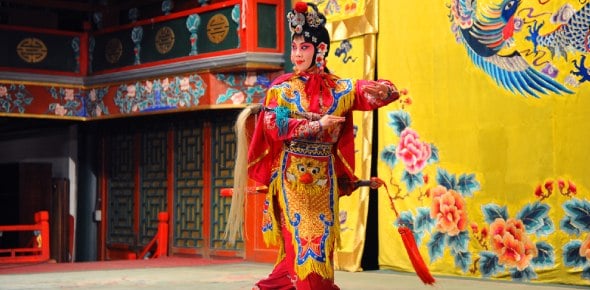Social Studies Grade 7 Exam Practice Quiz Multiple Choice & True False
-
The first Athenians lived in the Acropolis
-
True
-
False
-
This Grade 7 Social Studies practice quiz focuses on the golden age of Athens, key historical events like the Persian Wars, and factors influencing ancient river valley civilizations. It assesses knowledge of historical timelines, critical events, and geographical influences, enhancing students' understanding of ancient Greece.
(65).jpg)
Quiz Preview
- 2.
What happened to the city at its peak?
-
The business and economy improved
-
Enhanced aspect of art and culture
-
City was rebuilt and renovated
-
All of the above
Correct Answer
A. All of the aboveExplanation
At its peak, the city experienced multiple positive changes. The business and economy improved, indicating a growth in trade and financial prosperity. Additionally, there was an enhanced aspect of art and culture, suggesting an increase in creativity and appreciation for the arts. Furthermore, the city was rebuilt and renovated, implying that it underwent physical improvements and modernization. Therefore, all of the above options accurately describe what happened to the city at its peak.Rate this question:
-
- 3.
The acropolis was built on a rocky hill
-
True
-
False
Correct Answer
A. TrueExplanation
The acropolis was built on a rocky hill, which means that the statement is true. The term "acropolis" refers to a fortified hilltop or citadel in ancient Greek cities. These acropolises were strategically built on elevated and rocky terrain to provide a defensive advantage against potential invaders. The rocky hill provided a natural barrier and made it more difficult for enemies to approach and attack the acropolis. Additionally, building on a rocky hill offered a higher vantage point, allowing for better visibility and surveillance of the surrounding areas.Rate this question:
-
- 4.
Which of the following factors played the most significant role in the development of ancient river valley civilizations?
-
Proximity to mountain ranges for defense
-
Access to fertile land and water sources
-
Availability of precious metals for trade
-
Presence of large forests for timber and wildlife
Correct Answer
A. Access to fertile land and water sourcesExplanation
Ancient river valley civilizations, such as those in Mesopotamia, Egypt, the Indus Valley, and China, thrived primarily due to their proximity to rivers, which provided access to fertile land and water sources. These resources were crucial for agriculture, supporting large populations and leading to the development of complex societies. While other factors like defense, trade, and natural resources were important, access to fertile land and reliable water was the foundation of these early civilizations.Rate this question:
-
- 5.
Approximately from when to when was the golden age of Athens?
-
230 B.C. - 150 B.C.
-
550 B.C. - 340 B.C.
-
800 B.C. - 560 B.C.
-
660 B.C. - 300 B.C.
Correct Answer
A. 550 B.C. - 340 B.C.Explanation
The correct answer is 550 B.C. - 340 B.C. The golden age of Athens refers to a period of significant cultural and intellectual advancements in ancient Greece. It was characterized by achievements in arts, philosophy, drama, and democracy. This period is commonly associated with the rule of Pericles and the construction of iconic structures like the Parthenon. The dates 550 B.C. - 340 B.C. align with the historical timeline of Athens' golden age, making it the correct answer.Rate this question:
-
- 6.
Who was Athene?
-
The queen of Athens
-
The goddess of Athens
-
A slave who was significant in Greek history for various reasons
-
Athene was a common name in Athens
Correct Answer
A. The goddess of AthensExplanation
Athene was the goddess of Athens in Greek mythology. She was considered the patron deity of the city and was associated with wisdom, courage, and strategic warfare. Athene was highly revered and worshipped by the ancient Greeks, and her temple, the Parthenon, was one of the most important religious sites in Athens. As a goddess, she played a significant role in Greek history and culture, representing the ideals and values of the city-state.Rate this question:
-
- 7.
What was the parthenon?
-
The main temple of the Acropolis, dedicated to Athene
-
The place where political assemblies were held
-
The place where slaves slept
-
An entertainment centre
Correct Answer
A. The main temple of the Acropolis, dedicated to AtheneExplanation
The Parthenon was the main temple of the Acropolis, a hilltop citadel in Athens, Greece. It was dedicated to the goddess Athena, who was the patron deity of the city. The temple was built in the 5th century BC and is considered a masterpiece of ancient Greek architecture. It served as a place of worship and housed a massive statue of Athena. The Parthenon is renowned for its impressive design and intricate sculptures, making it an iconic symbol of ancient Greece.Rate this question:
-
- 8.
When was the city of Athens at its peak?
-
479 B.C. - 431 B.C.
-
885 B.C. - 839 B.C.
-
345 B.C. - 320 B.C.
-
100 B.C. - 78 B.C.
Correct Answer
A. 479 B.C. - 431 B.C.Explanation
During the period from 479 B.C. to 431 B.C., the city of Athens was at its peak. This was known as the Golden Age of Athens, a time of great cultural, intellectual, and political achievements. It was during this period that Athens experienced significant growth in democracy, art, architecture, philosophy, and literature. This was also the time when famous figures such as Pericles, Socrates, Plato, and Aristotle made their mark on Athenian society. The city was a center of power and influence, and its achievements during this time continue to shape Western civilization.Rate this question:
-
- 9.
What does acropolis mean in ancient Greek?
-
The temple
-
The top of the city
-
The high city
-
The palace
Correct Answer
A. The high cityExplanation
Acropolis is a Greek word that translates to "the high city". In ancient Greece, the acropolis referred to the elevated part of a city, usually fortified, that served as a religious and administrative center. It was typically home to important buildings such as temples, monuments, and sometimes palaces. The term "the high city" accurately describes the meaning of acropolis in ancient Greek.Rate this question:
-
- 10.
Which war ended at the start of the golden age of Athens?
-
The trojan war
-
The peloponnesian war
-
The second sacred war
-
The persian wars
Correct Answer
A. The persian warsExplanation
The Persian Wars ended at the start of the golden age of Athens. These wars were a series of conflicts between the Persian Empire and the city-states of Greece, including Athens. The Greeks, led by Athens, were able to successfully repel the Persian invasion and defend their independence. This victory boosted the confidence and power of Athens, leading to a period of cultural, political, and economic growth known as the golden age. During this time, Athens became the center of art, philosophy, and democracy, establishing its dominance in the Greek world.Rate this question:
-
- 11.
What was the agora?
-
The place where priests held their council
-
The main meeting area of the city
-
The king's palace
-
A sacred public alter for praying to the gods and making sacrifices.
Correct Answer
A. The main meeting area of the cityExplanation
The agora was the main meeting area of the city. It was a public space where people would gather for various purposes such as socializing, conducting business, and participating in political discussions. It served as a marketplace as well, where goods were bought and sold. The agora was an essential part of ancient Greek city-states and played a significant role in the civic life of the community.Rate this question:
-
- 12.
What was the earliest settlement of the city?
-
The temple of Hephaestus
-
The agora
-
The parthenon
-
The acropolis
Correct Answer
A. The acropolisExplanation
The acropolis is the correct answer because it refers to the earliest settlement of the city. The acropolis is a fortified hilltop or citadel where ancient Greek cities were often built. It typically housed important religious and governmental buildings. In the case of Athens, the acropolis was the site of the earliest settlement and later became the location of iconic structures such as the Parthenon and the Temple of Hephaestus. Therefore, the acropolis is the most accurate and logical option for the earliest settlement of the city.Rate this question:
-
- 13.
What were the buildings around the Agora called?
-
Stoae
-
Strategoi
-
Aeropagus
-
Panathena
Correct Answer
A. StoaeExplanation
The buildings around the Agora were called Stoae. Stoae were covered walkways or porticoes that provided shelter and shade for people walking in the Agora. They were often used as meeting places, market stalls, and for various social activities. Stoae were an important architectural feature in ancient Greek cities and played a significant role in the daily life and functioning of the Agora.Rate this question:
-
Quiz Review Timeline (Updated): Oct 23, 2024 +
Our quizzes are rigorously reviewed, monitored and continuously updated by our expert board to maintain accuracy, relevance, and timeliness.
-
Current Version
-
Oct 23, 2024Quiz Edited by
ProProfs Editorial Team -
May 29, 2012Quiz Created by
Zakstrom2468
Ancient Greece Real Test
In the 8th century BC, Greece began to emerge from the Dark Ages, which followed the fall of the Mycenaean civilization. Literacy had been lost and Mycenaean script forgotten,...
Questions:
31 |
Attempts:
905 |
Last updated:
Mar 21, 2023
|
Greece Trivia
Explore key aspects of ancient Greek civilization in this Greece Trivia quiz. Assess your knowledge on topics from the aftermath of the Trojan War to Spartan military training and...
Questions:
14 |
Attempts:
331 |
Last updated:
Mar 22, 2022
|
Ancient Greece History Knowledge Test
Have you been keeping up with all the history lessons in school? This quiz focuses on the Ancient Greece history. Let's see how much you learned in your class. The test...
Questions:
31 |
Attempts:
10321 |
Last updated:
Mar 19, 2025
|
Chapter 6 / Ancient Greece
Explore the fundamentals of Ancient Greece in this engaging quiz. Covering key concepts like democracy, city-states, and notable historical figures such as Alexander the Great,...
Questions:
34 |
Attempts:
586 |
Last updated:
Mar 20, 2023
|
An MCQ Quiz About Ancient Greece
This MCQ quiz focuses on Ancient Greece, exploring its unique historical aspects through questions about Spartan society, Athenian politics, and philosophical concepts. It...
Questions:
12 |
Attempts:
587 |
Last updated:
Mar 20, 2025
|
Ancient Greece Post Assessment Floyd
The 'Ancient Greece Post Assessment Floyd' evaluates knowledge on geographical and cultural aspects of ancient Greece, focusing on the challenges of terrain, the importance of the...
Questions:
49 |
Attempts:
125 |
Last updated:
Apr 25, 2024
|
 Back to top
Back to top








